A Stay in a Victorian
Hotel
by Bob Brooke
The 1829 opening of the
Tremont House in Boston was celebrated with an elaborate dinner. The
hotel had 170 rooms, each with the exclusive temporary property of the
renter unlike old-fashioned inns where a traveler could expect to share
even his bed with a stranger. For $2 a day the Tremont furnished guests
with four substantial meals, a wash bowl, pitcher and cake of soap as
well as gas lighting and a good supply of running water in the basement
"bathing rooms." It was a revelation. It was also the first American
hotel to be recognized as modern and first class.

Fifty years later a first class hotel charged as much as $4 to $10 a day
for a stay that was more than worth the outlandish price. "An American
hotel is a city within a city," said Hal per's Monthly in 1868. "Almost
every-thing necessary for enjoying life may be found within its walls."
It was an experience that began when the traveler arrived at thetrain
station and chose from the coaches representing each of the city's major
hotels.
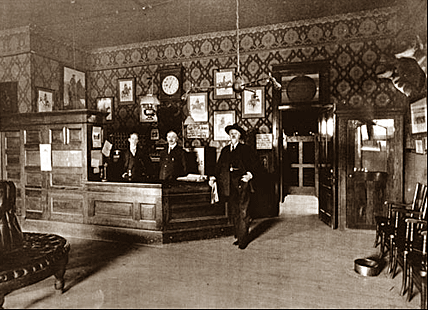 Once
at the hotel eager porters took charge of the visitor's luggage while
polite clerks waited at the desk to sign him in on the "American plan,"
which provided every-thing except wine at no additional cost — a
bewilderment to Europeans accustomed to an extra charge for every item
and service. A modest fee reserved a room with a plain but good carpet,
a bed "equal to the best," a call bell and every substantial comfort.
But for those with a better budget there was a suite worthy of a
mansion, with Brussels carpet, draperies of brocatelle, satin and finest
lace, huge mirrors of French plate, fine chandeliers, hot and cold
water, and gas burning comfortably in a fireplace to decoratively
supplement the steam heat. Once
at the hotel eager porters took charge of the visitor's luggage while
polite clerks waited at the desk to sign him in on the "American plan,"
which provided every-thing except wine at no additional cost — a
bewilderment to Europeans accustomed to an extra charge for every item
and service. A modest fee reserved a room with a plain but good carpet,
a bed "equal to the best," a call bell and every substantial comfort.
But for those with a better budget there was a suite worthy of a
mansion, with Brussels carpet, draperies of brocatelle, satin and finest
lace, huge mirrors of French plate, fine chandeliers, hot and cold
water, and gas burning comfortably in a fireplace to decoratively
supplement the steam heat.
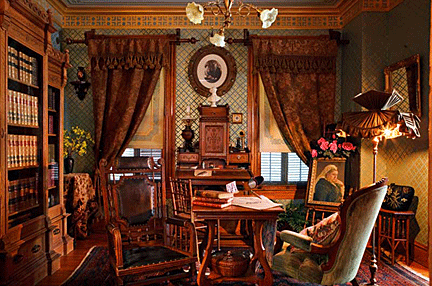 In
the morning each guest found his mail slipped under the door and the
boots he'd set out the night before polished. Downstairs the daily
papers were on sale at a newsstand near the breakfast room where a
waiter handed him a menu of about 50 choices. After eating, male guests
would retire to the gentleman's reading room with its easy chairs and
well supplied writing desks, or perhaps a stop at the adjacent cigar
stand and bar. In
the morning each guest found his mail slipped under the door and the
boots he'd set out the night before polished. Downstairs the daily
papers were on sale at a newsstand near the breakfast room where a
waiter handed him a menu of about 50 choices. After eating, male guests
would retire to the gentleman's reading room with its easy chairs and
well supplied writing desks, or perhaps a stop at the adjacent cigar
stand and bar.
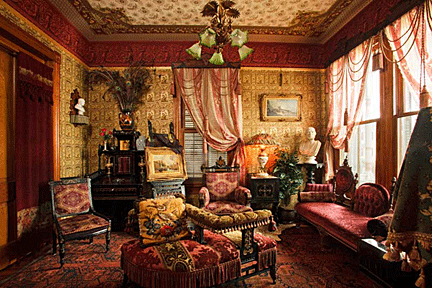 For
the woman traveler there was the ladies' parlor, where she could relax
and properly receive the male visitors she wouldn't dare invite to her
room. While travelers of the 1850s described these parlors as gilded and
gaudy, the European influence made those of the 1870s into a decorator's
dream of gloss and grace adorned with laces, damask carved wood, and
marble. Graceful desks, whatnots, book stands, and tasteful pictures
made the wayfarer feel at home. For
the woman traveler there was the ladies' parlor, where she could relax
and properly receive the male visitors she wouldn't dare invite to her
room. While travelers of the 1850s described these parlors as gilded and
gaudy, the European influence made those of the 1870s into a decorator's
dream of gloss and grace adorned with laces, damask carved wood, and
marble. Graceful desks, whatnots, book stands, and tasteful pictures
made the wayfarer feel at home.
The best of the hotels provided "salons” for hairdressing, saloons for
billiards, ticket offices for theater or railway, a telegraph office
complete with news bulletins and stock reports, a livery office for
hiring transportation, and bathrooms for ever floor. A detective dressed
like the guests watched out for their safety while a number of watchman
patrolled the nighttime corridors always on the lookout for signs of
fire.
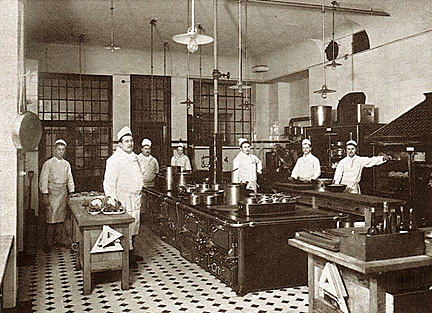 The
main event of each day at these hotels was dinner. Sumptuous refinement
became de regur in the dining rooms of fine hotels. Though electricity
had become a feature of the major houses in the 1870s, hotels usually
served dinner in the soft ambience of gas light. Perfectly folded
napkins lay alongside shining glassware and glowing silver on spotless
linen tablecloths. The menu was long and varied, the service fast and
faultless and the food excellent, fresh and unlimited, inviting guests
to linger. It was a miracle of dignified elegance and quiet efficiency.
But behind the scenes the atmosphere was very different. The
main event of each day at these hotels was dinner. Sumptuous refinement
became de regur in the dining rooms of fine hotels. Though electricity
had become a feature of the major houses in the 1870s, hotels usually
served dinner in the soft ambience of gas light. Perfectly folded
napkins lay alongside shining glassware and glowing silver on spotless
linen tablecloths. The menu was long and varied, the service fast and
faultless and the food excellent, fresh and unlimited, inviting guests
to linger. It was a miracle of dignified elegance and quiet efficiency.
But behind the scenes the atmosphere was very different.
In a large, brilliantly lighted kitchen vegetable preparers mashed
potatoes by the tubfull while cooks shouted in French at the
black-suited waiters scurrying in and out. Across the room a "rabble of
scullions” rattled silver and scraped plates, plunging them into boiling
whirlpools and lifting them out again by derrick. Meanwhile, bundled up
butchers in a massive refrigerator cut steaks to an exact weight of 13
ounces, the bake shop prepared rolls for breakfast, and "below the
pavement" the sommelier carefully locked the door to the wine cellar in
which the hotel stored thousands of bottles kept at a year-round
temperature of 28 degrees.
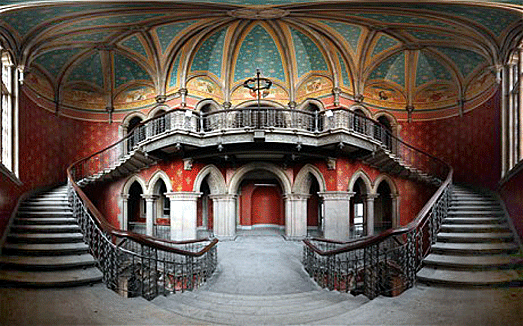
To keep an establishment of this size smoothly functioning required an
enormous number of people. Legend has it that the Hotel Windsor in New
York had more servants than guests, even when the house was full, and
400 to 500 employees weren't uncommon at any of the large city hotels.
Crews of decorators, upholsterers, seamstresses, silversmiths, painters,
window cleaners and floor scrubbers kept up appearances, while a shop
staff of tinsmiths, electricians, gas and steam fitters and engineers
made the machinery run. Electricity might have been the miracle of the
age but steam did the washing and drying of thousands of sheets and
tablecloths each day plus a great deal more. Steam helped to peel and
grate vegetables and fruit, shell peas and corn shelled, pit cherries,
whisk eggs, chop meat, turn roasts, and freeze ice cream.
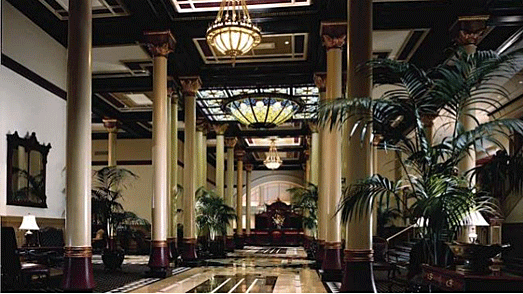
Steam pipes, water pipes, drain pipes and gas pipes ran like arteries
through Victorian hotels, their extent figured by contractors in miles,
not feet. Builders constructed the latest and largest establishments
with solid brick partition walls from ground to floor to deaden room
noise and reduce the dangers of fire. Like the Astor House of New York,
they could be described as massive piles of marble, slate and iron. They
could also cost as much as $2 million to build and furnish in a style to
suit the gilded tastes of their customers of the Gilded Age.
<
Back to More Special Features
Next Article > |
